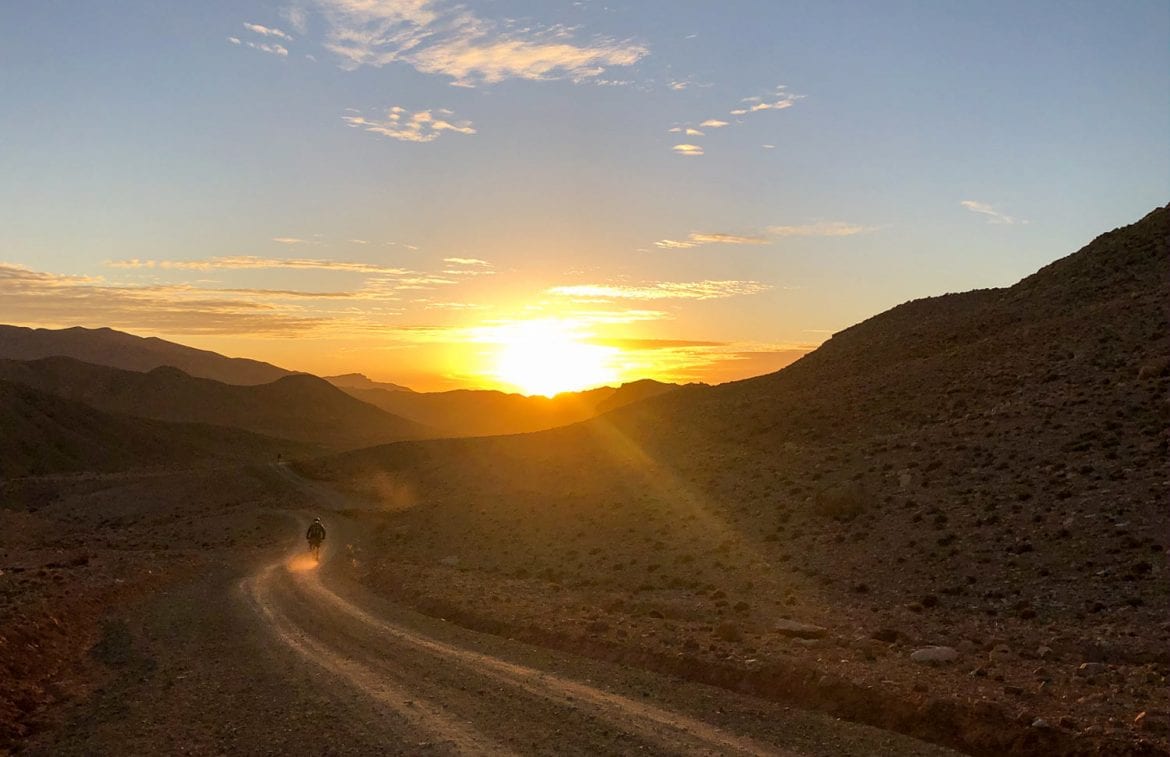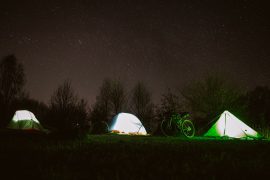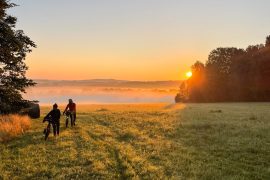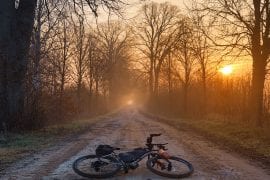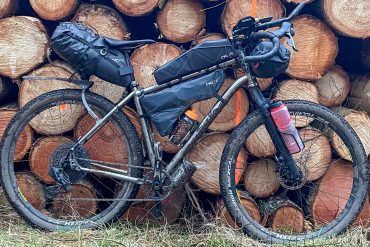We did it! Tobias and I finished the Atlas Mountain Race 2020 in Sidi Rabat in 6 days, 18 hours and 5 minutes! It was my first bikepacking race and one of the toughest races there is! I am very proud of that.
And now you are certainly waiting eagerly and rightly for a report from me. But that’s harder than I thought. Because the time in Morocco, the race and the many kilometres have merged together in such a way that I can’t yet separate them, or can only do so with great difficulty. So I simply did what you do in such situations: I asked myself questions, anticipated questions from you guys and did an interview with myself.
Have fun with it!
What is the AMR and how is it organised?
The PEdAL ED Atlas Mountain Race is a Bikepacking race over 1,145 km and 20,000 altitude metres through the Moroccan mountains, more precisely through the Atlas and the Anti-Atlas. Race means here: Three checkpoints have to be reached in a certain time. The first checkpoint was after 127 km, the second after 665 km and the third after 941 km. Each of these checkpoints has a so-called cut-off time, i.e. it is only open until a certain point in time. If a rider does not reach a checkpoint within the given time, he does not get the checkpoint stamp and is no longer officially in the race, but can of course continue.
The Atlas Mountain Race was designed for a total of 8 days maximum riding time. In this time, you have to head for the checkpoints and complete the route, which means arriving at the finish. Only those who manage this have “finished” the race. As far as I could see, there were about 40-45% of riders who had to give up for various reasons, or who simply took too long and finished later.

Nelson once said in a podcast interview that he expected a scratch rate of up to 60% – it obviously didn’t turn out that much. But that doesn’t mean that the course and the requirements were easier. The 196 riders had to go through a selection process and from my point of view they were all physically and equipment-wise capable of tackling the race. Maybe some of them underestimated the race, didn’t plan for the route and its requirements or didn’t prepare for it. But that should be the absolute minority. Such races are usually decided in the mind anyway, or by technical defects for which you can’t do anything.
What were the reasons for you to participate in the AMR?
I’ve been following the Silk Road Mountain Race and also the Tour Divide for a while and I’m getting more and more interested in this sportive and competitive way of Bikepacking. I have evolved from a more classic bike traveller to a travelling Bikepacker to a rider who wants to combine more sport and Bikepacking.
At the moment, I’m just very attracted to the physical, mental and material challenges. Maybe this is my kind of mid-life crisis, although I’ve been having it since I was 14. I find it very interesting to get to know new countries or countries I already know in a different way by bike. And not necessarily alone, but together with other crazy people who are willing to spend many days torturing themselves on impossible paths through the most beautiful landscapes on earth. And to have fun doing it.

And the Atlas Mountain Race came at just the right time. The timing was perfect for me, it didn’t require too much time, i.e. holidays and organisation at home (I would need at least 4 weeks for the Silk Road) and I had always wanted to take part in a first edition.
On top of that, with Nelson as race director, the organisation was in the hands of someone who stands for the toughest bikepacking challenges you can currently take on. And he delivered, especially at the end of the race with a 7 km sand field as a pushing section, which demanded everything again psychologically and physically.

After 1993, 2000 and 2007, it was the fourth time that I was able to cycle through Morocco. I have already cycled across the Atlas and Anti-Atlas on a touring bike, but the AMR showed me completely different corners of the country with a different intensity.
How should you imagine such a race and what is the difference to other Bikepacking events?
The most obvious difference is of course the time limit, as described. Everything else is based on this. In addition, the field of riders is also rather competitive. You feel that people are not here just to have a good time among like-minded people, surrounded by dream bikes and equipment. It’s about the sporting aspect of mastering the course and challenges as quickly and well as possible. For themselves and in comparison to others.

The riders who take part in such events often have experience of other ultra-endurance races such as the Silk Road, Great Divide, Italy Divide and are therefore well prepared and equipped. This is quite different from events like the Tuscany Trail, where the field of riders is more colourful and the focus is on riding together and enjoying the route.
Another aspect is the quality and difficulty of the route: the AMR is definitely not the little sister of the Silk Road. It is a tough, very technical, trail-heavy Bikepacking race that I would rank among the toughest in the world today. The track has less gravel and asphalt sections and more very rocky, blocky or sandy trails, steeply up or down. And there are many pushing passages and sections where you have to climb with the bike.

Only on paper the 1,145 km and the altitude difference are ok, but in nature they are a real challenge due to the nature of the route.
The remoteness, supply situation and climate also contribute to this: The Atlas and Anti-Atlas are also characterised by stony deserts and plateaus. Temperatures here can be below 0 degrees at night and rise to over 35 degrees during the day. These temperature fluctuations are naturally a strain on the riders.

In addition, you are often very alone, because only a few people live in these areas. This means that distances of sometimes more than 100 km have to be covered without supply facilities. Of course, you have to plan for this and, above all, be able to cope with it. When we arrived at checkpoint 2, we were told that unfortunately the resupply point in 45 km had nothing left, which is why we would only get water or food again in 135 km. So things can change spontaneously on the spot.
Were there any problems with supplies and how did you feed yourselves on the way?
Honestly, our good planning and also our experience paid off here. We never had a supply bottleneck and before longer sections without resupply, we stocked up on enough water, carried in our backpacks.
When it came to food, we usually resorted to the wide range of bars on offer on site and also each had three trekking meals and energy bars and gels with us. This meant that we usually had around 10,000 kilocalories on board at all times, and thanks to our camp cooker, we were able to prepare a meal for ourselves at any time.

We actually did that, because with an average calorie consumption of 7-8,000 per day, you simply have to refuel as often as you can. So we even took the time before the last mountain of the route to cook something again to provide our bodies with enough energy for the coming final effort.
Otherwise, we often had omelettes in many variations. Besides a Tajine, the omelette was the main meal on the way. And although we sometimes didn’t feel like it anymore, we were happy when we had another omelette at the next resupply point.

And I rediscovered the combination of canned sardine and bread. It’s not only very cheap, but also gives you a lot of power. Moreover, it’s available everywhere.
Which sections of the route do you remember most?
Basically, I have to say that I can’t remember everything correctly. I saw and photographed a lot, but I can no longer clearly identify the individual sections. That’s simply because the long days of racing have melted into one big mass and it simply takes a while for my brain to untangle it again.

In principle, I followed the track on my navigation system. For me, there was only that and the roadbook, which Tobias prepared so wonderfully. In contrast to cycling tours, where I orientate myself according to places and also know pretty much exactly where I am and where I am going, it was different with the AMR. Here I was only interested in the current kilometres, distance to the next resupply, route characteristics and altitude metres. I would have to look up the names of the places we passed through. But it’s not important for the race to know that.

In addition, we covered many hours in complete darkness and only perceived the route immediately ahead of us through our light cones. We usually started at 4 or 5 am, the sun did not rise until around 8 am. And in the evening we rode until 10/11 pm and the sun was already setting at 7.30 pm. That means we cycled in the dark for about 6-7 hours a day.

But of course there were landscapes or sections of the route that I particularly liked.
For one thing, the river valleys through which we were sent again and again. Sometimes you could ride well, sometimes not at all. It is quite impressive how the rock faces tower up to the right and left and how you push your tiny bike through huge rocks that are surrounded by masses of water at another time of the year. Often it was also very wide river valleys at the foot of big mountains that we cycled through. Now and then there was still some water, but crossing was never problematic.

Then the Martian landscape: the track led through an endless stone desert in many colours. In the heat of the day, the horizon shimmered and especially in the morning, when the first rays of the rising sun bathed the land in red light, it was like being on another planet. Simply wonderful!

Although very strenuous, I found the so-called Colonial Road very worth seeing. This is a very old paved road that winds its way up the mountains from the village of Tagmout. Endless. Probably built in colonial times, it was fortified on the edges towards the hillside. In the course of time, however, the surface, which was probably gravel at one time, has worn away and now there are many large stones lying around in the open and bare rocks can be seen.

This makes riding quite challenging, also because the slope is threatening. And as if that wasn’t enough, the road was completely broken down and torn away in some of the serpentine curves, so that we had to climb down steeply with our bikes for a few metres and then climb up steeply again. We were able to do the first of these “broken road” sections at dawn, so we could see reasonably well where there was a climbing opportunity. The riders who had to do this at night have my extra respect!

This was quite dangerous and in general I am glad that there were no major accidents. Regardless, it was an impressive spectacle to see how the road continued to wind its way up the mountainside around every bend.
How was it to ride as a pair with Tobias, when you usually travel alone?
I met Tobias at the Tuscany Trail, rode together for a few days and liked him right away. We were interested in the AMR at the same time and decided to apply together.
When we got the confirmation, we were of course very happy and immediately started planning and preparing. Both our experiences came together and we regularly exchanged information about the training status and equipment. The highlight was of course our training camp in Spessart in January.

Riding with Tobias is fun because he is a calming influence who can keep me on course. I’m more competitive on the road and would certainly have ridden differently. But together we both kept remembering the plan and followed it 1:1: ride around 140 to 170 km a day, sleep for at least 4 hours and eat enough. Especially with the latter, Tobias was a good race partner who always encouraged me and why I had a very good nutrition strategy in Morocco.
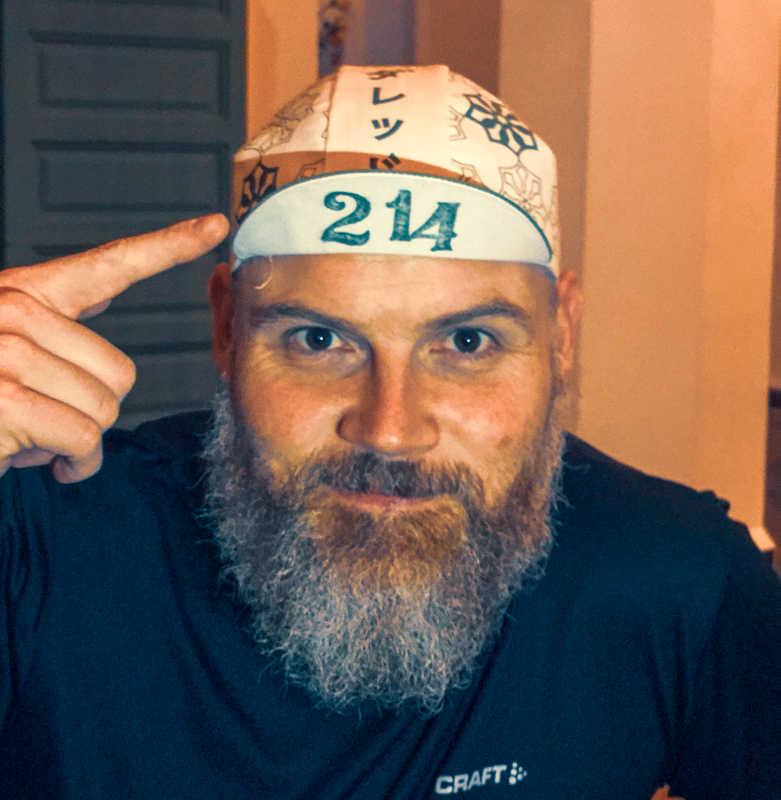
In addition, we have similar speeds and, even more importantly, with Tobias you can easily ride 100 km in silence. That’s incredibly pleasant, also because I don’t have to pretend. That wouldn’t work at all with such stresses as the AMR.

So riding in the team was no problem for me and I didn’t regret it once. We didn’t argue either. On the road, we cycled together a lot, but also sometimes more apart, especially on the mountains, where everyone has to follow their own speed.

But the best thing was that we could wake each other up during the ride when one of us was about to fall asleep on the bike due to the heat on the mountain.
But the advantages of being a team as opposed to a single rider are quite small. We only shared some tools, the pharmacy and the cooker. The rest we both had the same, also because in the event of a split, the other can then simply continue riding.
How did you fare physically on the race, did it leave any traces?
Our ambition was never to ride at the front or to go beyond the limits of what was possible for us. We always planned with a reserve and rode like that. If our plan had been shaken by a breakdown or illness, we could always have fired up an extra turbo, but that would have put more effort on us.

It was still very physically demanding, but I never rode at the limit of my performance. Don’t get me wrong: it wasn’t a comfortable ride through the countryside and I couldn’t have kept up with the front riders if I had tried harder. In races like this over several days, you have to be able to manage your energy well and ride tactically and – as Bengt Stiller said – also have a head for heights in order to complete such races successfully.
There are a lot of very good cyclists who waste their energy in the first few days and then sag and drag themselves to the finish line overtired and exhausted. Or they arrive days later or drop out because they are too tired or psychologically unable to cope.

Ultra Endurance requires a different approach if you don’t always complete such races in a few days like Sofiane, Jay or James. And you don’t have to sleep much and are used to it.
I think we prepared quite well and were also realistic in our goals. That takes a lot of pressure off and ensures a stable psyche.
Physically, the first and second day were of course challenging, but then you get used to everything. And you can see very well from our riding times and distances how we have continuously improved. There were no major aches and pains. A little sore here and there, but always under control thanks to the cream. There were also no falls, and only minor injuries. On some downhill sections through scree fields I hit my ankles with stones. It was painful and bled a bit, but it didn’t bother me.

The hands were the most stressed and after the race it took a few days until they had calmed down again. Tobias had more problems than I did and he could only do fine motor things with his hands with difficulty. In addition, the skin on his fingers was torn and very dry.

One of my big toes is still numb. The other one is just coming back. That’s no cause for concern either, especially as my feet were also subjected to a lot of strain and then still had to wear the cycling shoes, which had to serve as alpine boots again and again. And on long rides, feet always swell up, which is not good.
What did your training for the AMR look like?
From my point of view, special preparation for this kind of event is definitely appropriate, even if it is said that training is only for the untalented.

You can’t really train for a race like the Atlas Mountain Race. But you can get physically fit. In my case, I reduced my weight by 7 kg and at the same time built up muscles through athletic and endurance training.
My training strategy was to ride a lot. In all weathers and to include interval training. So I cycled 1,000 km per month and also bought a roller to train the intervals. That was 35 sec intervals (15 sec recovery, 20 sec speed) for 10 minutes and then four times in a row.

That definitely paid off, because it improved my performance on the mountain significantly and I was also able to ride longer at higher loads and recover faster.
It paid off in Morocco, because I was really strong on the mountain and could rely on a very good condition and strength.
Was there any damage to the bike or equipment?
Here my answer until a few days ago would have been that we didn’t have any damage to complain about, because we didn’t have any problems on the road.
Both Salsa Fargo bikes survived the race without any problems. However, I once got a stone against the rear derailleur (which was no surprise) and it had shifted a bit as a result. On closer inspection I discovered that the rear derailleur (or the derailleur hanger) was bent and that the adjustment screws and the B-Skrew had also become loose due to the constant jerking and knocks. This eventually led to problems with shifting, but I was able to fix it. At home, I took a closer look at the whole thing and it was probably more damaged than I thought.

The rear derailleur is bent and comes into the cassette in the upper gears. I still have to check whether the derailleur hanger is also bent. I can ride with it, but it’s not a long-term solution. I’ll probably install the Rival rear derailleur and the 11-46 cassette for the time being. A once considered conversion to the electronic SRAM eTap AXS is too expensive for me at the moment. At the AMR, some riders were riding with electronic gears and I find that very interesting for me in the future.
After unpacking the bike at home, I also noticed that the rim on the rear wheel was cracked on both sides over a length of about 6 cm. I hadn’t seen this in Morocco because the rim was dirty. And there was nothing to indicate this from the riding behaviour either. So I contacted the manufacturer HUNT. Fortunately, they replied very quickly and my bike was picked up by a courier, inspected and repaired at HUNT and then delivered to me again. That’s what I call customer service. However, I still have a strange feeling, because it would have been the end if the rim had broken open in Morocco.

The equipment didn’t let us down, but a few things became apparent through the hard use that would probably not be noticed under normal conditions. For example, the constant squeaking of the rubber spacers on the cockpit bags (probably due to the dust) almost drove us both crazy.
But at least all the panniers held. However, it turned out that especially in races like this, where time is important and you have to operate the panniers even in low temperatures and under heavy physical strain, there were a few “weaknesses”.

So a harness system – if it really works well – would be the better choice here to get to your sleeping gear quickly and easily and then be able to compress and pack it again well. This is more difficult and fiddly with the normal systems and often leads to you having to dismantle everything to pack it properly. So what doesn’t really matter for normal Bikepacking tours is crucial for this kind of endurance race.
Looking back: Was the Salsa Fargo the right bike for the Atlas Mountain Race?
Yes, absolutely. Even though the AMR is more for mountain bikes with suspension forks, the decision for the Salsa Fargo was the right one. It has MTB geometry, so it’s a bit higher, which was an advantage on the rocky sections, and it scored points with its tyre width. This geometry also makes it ideal for long tours through the countryside. I didn’t even have any seat discomfort or back pain.

We both rode 2.25 inch Vittoria Mezcal tyres, which was the right width for the AMR and the right tyre choice. The Mezcal were reliable, had good grip and didn’t break down once. You can see the ride on them, but they can still run for a few thousand kilometres now.
For the brakes, we used the TRP Spyre mechanical disc brake. In Morocco it proved again why it is probably the best mechanical disc brake in the world: Always good grip, we didn’t even have to adjust it and there is still enough pad left, even though we had to use it a lot.

With our gear ratios of 32/11-46 (Tobias) and 32/11-50 (Martin) we were very well equipped for the steep climbs and hot rides on the flat. I wouldn’t change that for future events of this kind. Of course, the chain and sprockets are now under a lot of strain, but you can still ride them for a few hundred kilometres, if not a few thousand, before they finally fall off.
Have you ever thought of giving up?
No. Never. There was not one moment when Tobias and I thought about it. There was simply no reason to, because everything was going wonderfully and according to plan.

I believe that such races are also and to a large extent decided in the mind. For example, when you’re riding through this endless Martian landscape, you’re alone, the sun is burning and then there’s another steep climb. It’s all about mental strength and experience in dealing with these situations. Of course, this is where my experience from many years of travelling alone comes in handy. I can focus and distract myself.
So giving up was never a thought or an option. It would only have been a decision if a technical defect or physical damage had forced us to do so.
What tips would you give to future AMR riders?
Honestly none, because I assume that everyone who signs up for the AMR knows exactly what he or she is doing, what to expect and how to prepare.
One hint would be that a mountain bike with suspension fork would be more suitable for the AMR and less a gravel bike. The route is very technical and requires appropriate bike skills. Experienced Bikepacking riders who do a lot of off-road and less on forest highways should be well prepared for it.

The AMR takes place in February, which for many participants means training in poor home weather conditions. I would still recommend riding outside as much as possible and using the roller only as an interval station. But again, I assume that most riders have their own routines and experiences in this regard anyway.
The supply situation in Morocco is actually quite good on the route, the food edible. There is often a wide selection of bars and waffles in the shops. You can also get bread and fish everywhere. Hot food is only available in larger towns and water in small settlements on request. But then you should disinfect it before drinking.
With a bit of forward planning, you should be able to get through without any problems. A small backpack for water or food has proved especially useful on the longer stretches without resupply.

Planning and very good preparation for the route are essential from my point of view. That and the strict pursuit of this planning were the basis for our success. Especially at the beginning, you mustn’t let yourself get infected and blow everything out right away when everyone is racing towards the first mountain.
Constant Pace Wins the Race!
What equipment impressed you and what would you not take with you next time?
I was particularly taken with the Vittoria Mezcal tyres and the TRP Spyre brakes. But I was most impressed by the Wahoo ELEMNT Roam. I was able to test this navigation device during the AMR and I am thrilled. First of all, setting up the Roam is more than easy thanks to the smartphone app and, above all, intuitive. I was able to install the map for Morocco easily and synchronise the GPX files with the Roam.

The accuracy of the GPS was already very high. If I was only a few metres off the track, I was informed directly by the Roam. This is especially important on routes through riverbeds or sand or in the dark, because it means I can always rely on the track, even if the path is not really recognisable.
And then there’s the battery life: I had the Roam running continuously from 4.30 in the morning until 10/11 in the evening and it still had battery left. Sometimes even 40%. Recharging via the power battery was no problem and very fast. That really impressed me and I’m going to buy a Roam.

There was no piece of equipment that I would not take with me again. The decision for the bivouac sack and against the tent was right. Only the rain trousers, possibly the towel and the water bag I would leave out next time.
What comes next?
Well, with the AMR I have once again tested my family’s ability to suffer. I’ll have to cut back for now. But of course I can’t do without cycling. I’m not planning any more tours this year, apart from small laps and overnight trips. I will probably take part in the Veloheld Gravelspartakiade again in autumn and, depending on time and opportunity, try to take part in one or two local Bikepacking events.

But I can’t hide the fact that I’m definitely considering the Silk Road, the Tour Divide or the Italy Divide. When and if that will work out, I’ll have to see. But when I came back from my tour through Kenya and Tanzania last year, I didn’t think I’d be chasing with 196 other crazy people through the Moroccan mountains just one year later…
Update: Tobias and I will participate in the Silk Road Mountain Race 2021.
PEdAL ED Atlas Mountain Race Strava Daten
Day 1: In the beginning was the mountain
Day 2: The early bird can catch up properly – and gets used to the mountains
Day 3: Between mountain and deep valley
Day 4: Landing on Mars
Day 5: Please don’t fall asleep in the oven!
Day 6: Oops, there is no road! Uphill on the Colony Road
Day 7: The longest day
More reports about the Atlas Mountain Race 2020
- Interview with Sofiane about the Race and his finish: https://blog.komoot.de/sofiane-sehili-gewinner-des-altas-mountain-race/16634
- Lian van Leeuwen about the AMR from a photographer perspective: https://bikepacking.com/plog/2020-atlas-mountain-race-report-1/
- Christian Meier, long time leader at the AMR, about his participation and the race: https://theservicecourse.cc/atlas-mountain-race
- Jon Woodroof about the AMR and bikepacking and bikepacking races in general, with pictures by Stefan Haehnel on The Radavist: https://theradavist.com/2020/03/finding-ourselves-in-the-atlas-mountains/
- The official AMR Podcast with Stefano: https://atlasmountainrace.cc/podcast-2020/
- James Marc Hayden in Interview about the AMR 2020: https://ridewithgps.com/journal/4569-2020-atlas-mountain-race
- A nice overview of the bikes of the AMR 2020: https://bikepacking.com/bikes/2020-atlas-mountain-race-rigs/
- Chris Herbert on the AMR from the perspective of a driver who had to give up: https://www.apidura.com/journal/beer-in-agadir-joining-the-party-train-at-the-atlas-mountain-race/
- Rob Quirk about the AMR 2020: https://www.quirkcycles.com/blog/berbers-and-omelettes-the-atlas-mountain-race-2020
- Markus Stitz on Komoot with his AMR stages and pictures: https://www.komoot.com/collection/916296/-atlas-mountain-race-2020?ref=wcl&fbclid=IwAR2UG6thp8U7Zvn2kJOdeS8K0XZZZqJS8eYcxk1dhSZytkhv70K7S7iKaRI

